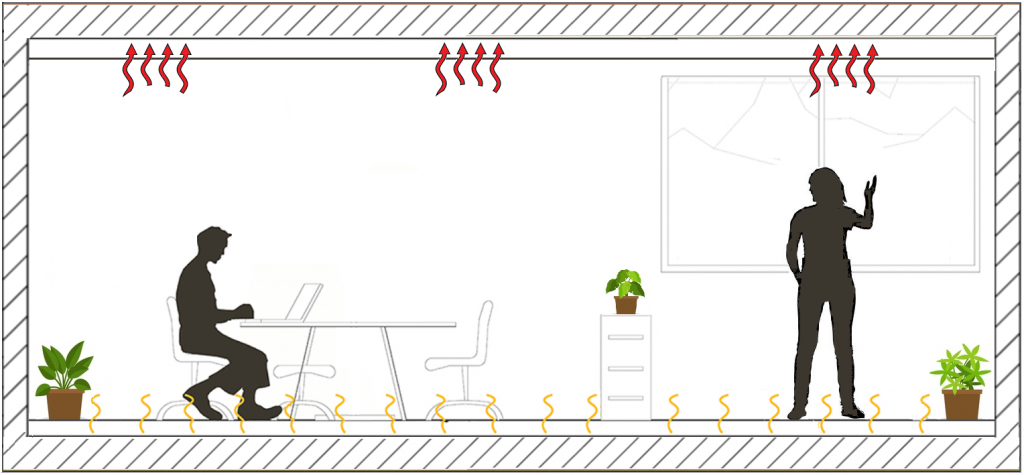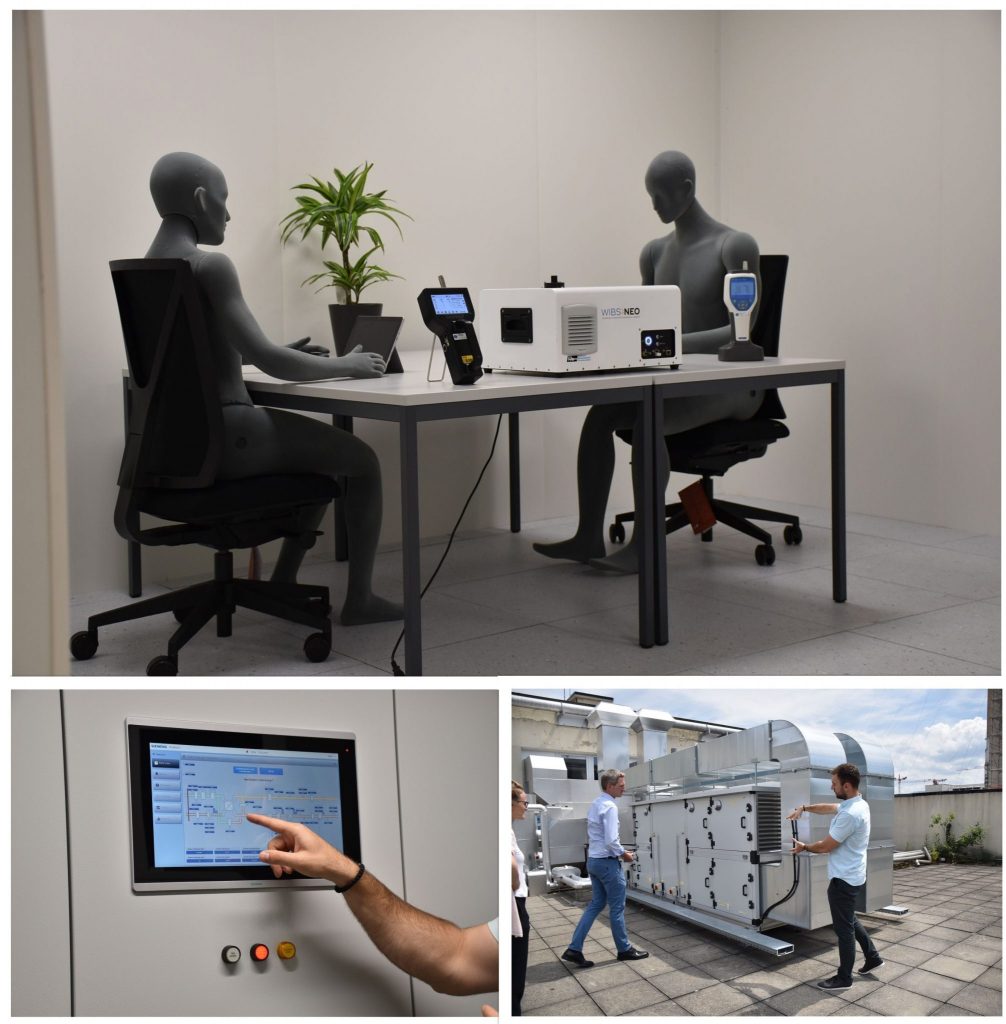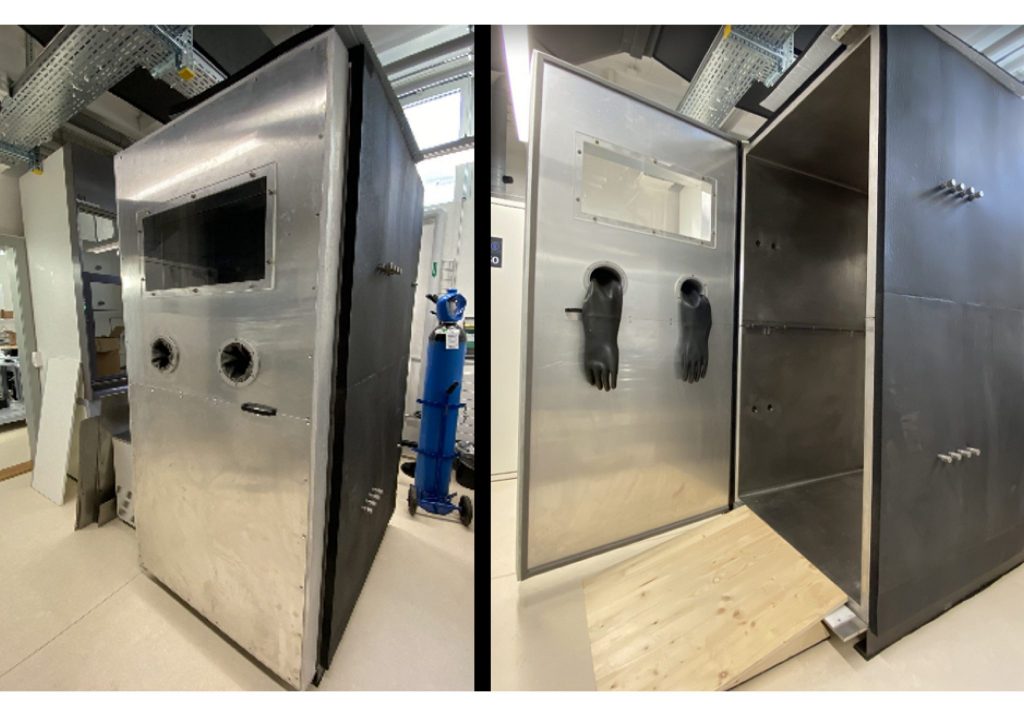
Built in 2019, HOBEL’s environmental chamber is suitable to test the effects of specified environmental conditions with or without human subjects on indoor air pollutant dynamics, inhalation exposure, ventilation, room air distribution, thermal comfort, sensor performance assessment, etc.
The chamber is equipped with a dedicated heating, ventilation and air conditioning (HVAC) system that can be independently controlled. Its dimensions are 4.25 x 11.60 x 2.53 m, but it has a modular design that can be divided into two or more spaces. Surfaces of chamber floor and ceiling are radiant with independent control by a dedicated heat pump. Overall, the chamber has a full control over air temperature, surface temperature, relative humidity, ventilation rate and room air distribution. The system has a three-stage filtration and the ability to test any other filter media. The interior of the chamber is suitable for generating any particle- and gas-phase pollution sources in a controlled manner. Air pollutants could also be injected into the supply air duct. In addition, it is possible to simulate different ventilation strategies, hence there is a full control over air distribution, as it is possible to customize the position of air supply/exhaust devices and adjust the ventilation airflow rate. The system can operate with air recirculation or as 100% outdoor air (single-pass) system. The chamber can be modified to simulate various indoor environments, such as offices, classrooms, residences, hospitals and healthcare facilities, etc. Overall, this is a unique and state-of-the art experimental facility available at only several locations around the world.

The main purpose of this facility is to permit controlled experimental studies on the fate and transport of gaseous pollutants and particles indoors, which helps in developing improved mechanistic models of pollutant emissions and human exposure. The controlled chamber tests complement field campaigns and personal exposure monitoring campaigns to better understand the mechanisms by which people are exposed to particles and gases. This approach informs development of control measures to reduce exposure, for example by developing more advanced ventilation systems or air cleaning techniques.
Stainless-Steel Climate Chamber

The 1.8 m3 stainless-steel climate chamber has an air temperature, surface temperature, relative humidity, and ventilation control to simulate various indoor thermal environments. It consists of two twin chambers that can be flexibly used separately or combinedly. The air temperature and surface temperature are controlled by circulating water within the chamber walls, which are controlled by two water baths. Relative humidity is controlled by a dedicated evaporative humidifier.
The chamber is designed to characterize emission characteristics of various indoor air pollutants sources, investigate indoor chemistry, and perform scaled-down indoor experiments with various airflow distributions.